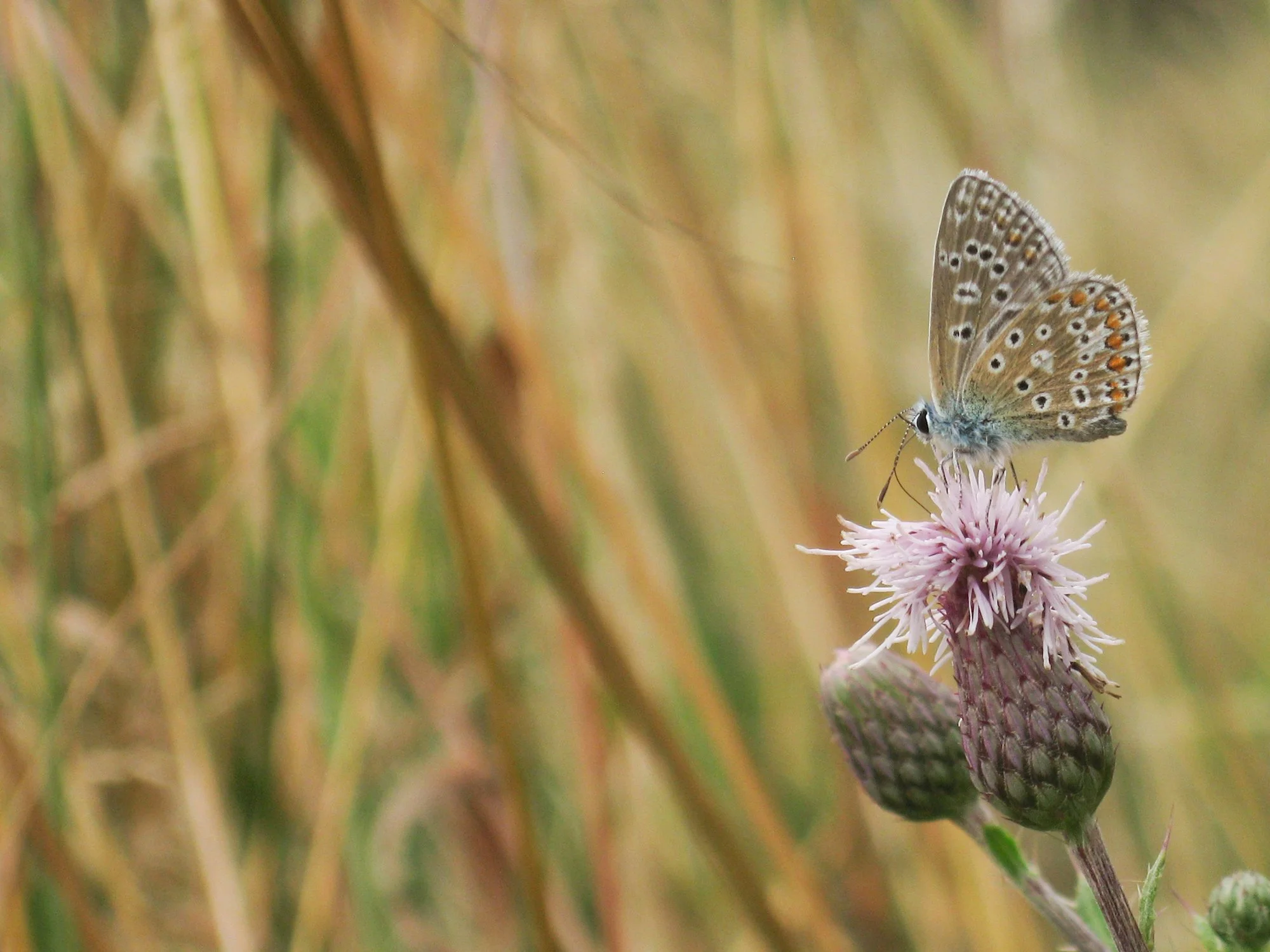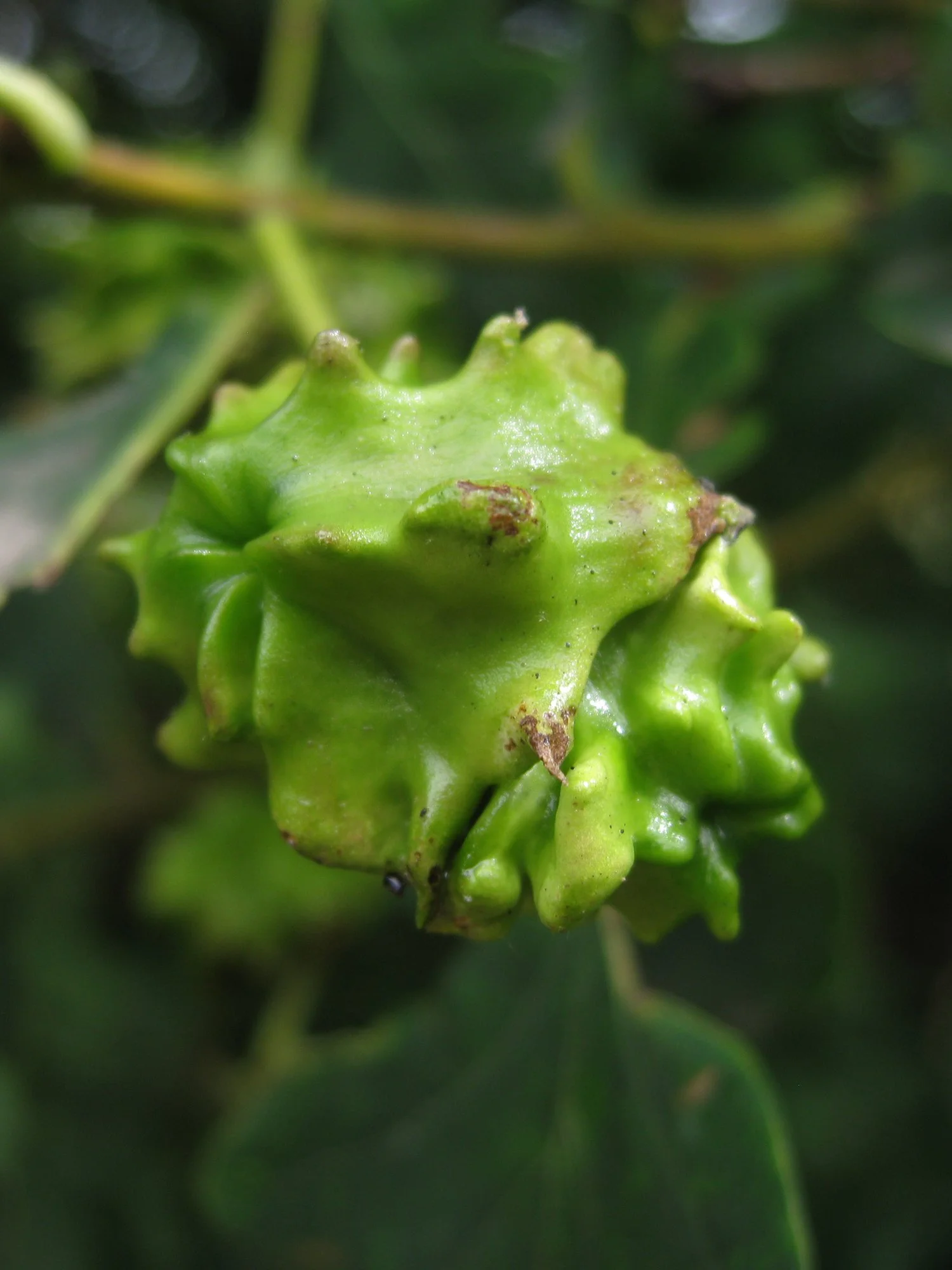WILDLIFE TO WATCH: SEPTEMBER
A COMMON BLUE BUTTERFLY.
Astronomical summer ends this month, but the sun is shining and temperatures remain high. Across the farm, fruits continue to develop, with cherries and blackberries now followed by plums, apples, and even grapes! Seeds too are forming in all shapes and sizes. A walk off any of the paths will find your covered in tiny burs, which have evolved to hitch a ride on passing animals, using them to carry the plants to new areas. Their tiny hooks inspired the invention of velcro. Another common dispersal strategy is taking advantage of the wind. Many trees have winged seeds with structures designed to help them catch the current. Dispersal is particularly important for trees, as new plants need plenty of light as well as nutrients and would struggle to compete near their parent plant.
THESE KNOPPER GALLS HAVE FORMED AROUND THE ACORNS.
If you take a closer look at the developing acorns, you’ll spot knopper galls growing over many of them, as well as button galls on the oak leaves. These are caused by wasps, who lay their eggs on the young acorns, triggering the plant to form a gall which protects the developing wasp larvae until they are ready to emerge in the spring.
Late summer wildflowers can also be spotted across the farm and you may notice the pink flowers of musk and common mallows and white flowers of campion as well as huge swathes of the yellow tipped spindly tangles of wild mustard. There are also large areas covered by the delicate yellow flowers of sickle medick and purple flowers of their relatives, lucerne. These stunning plants are from the pea family, like wisteria. Other striking flowers this month include common toadflax (with unusually shaped yellow flowers), the fruits of strawberry clover and the small blue flowers of viper’s bugloss.
Many birds are now coming to the end of their molt now and corvids (crows, magpies and their relatives) are starting to look a bit less scruffy than they were last month. Most of their young are now fairly independent, though these adult-sized youngsters can still be seen and heard begging from their parents around the farm.
The continuing warm weather means that insects continue to be extremely active. Grassy areas are filled with the chirping of bush crickets and grasshoppers and you can often catch glimpses of them between the blades. Dragonflies (particularly hawkers) can also be seen across the farm as they hunt on the wing for invertebrate prey. Butterflies too can be spotted across the farm, including large numbers of speckled woods, commas, small blues and large whites.


